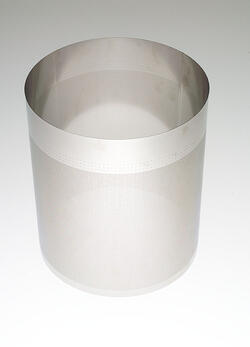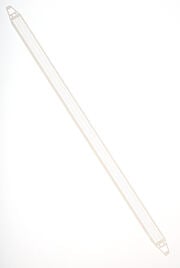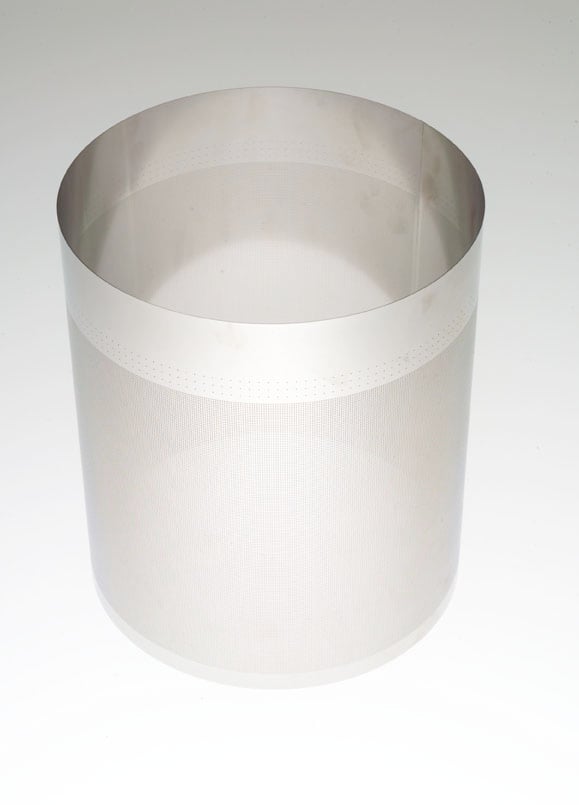What are the Advantages of Photo Etched Screens?
 Photo etching is an ideal solution for creating parts with lots of holes. In photo etching, the complexity of the part has no effect on tooling cost, processing or part cost. Whether the part is a solid shape or a screen, the etching process is exactly the same. As I often say to people, "we only charge you for the first hole, the rest of them are free."
Photo etching is an ideal solution for creating parts with lots of holes. In photo etching, the complexity of the part has no effect on tooling cost, processing or part cost. Whether the part is a solid shape or a screen, the etching process is exactly the same. As I often say to people, "we only charge you for the first hole, the rest of them are free."
Unlike any other metal cutting process, chemical etching produces holes that are completely burr-free and the metal has not been subjected to mechanical or thermal stress. Photo etching can easily produce grids and screens that have variable patterns, with or without solid borders, and in virtually any shape at no additional cost.
Photo etched screens, filters and grids find applications in so many different industries. From laser printers, to smoke detectors, to batteries, to scientific, medical and industrial instruments, and many more, photo etching is the process of choice for producing burr- and stress-free metal parts.
The photo etching process produces consistent quality, screen after screen, because there is no mechanical tool wear and the metal itself is never subjected to extreme heat or shearing forces. Screens can be chemically etched in metals as thin as .001".
Photo etched screens can be flat or formed. Many customers take the parts in the flat state and form them at assembly. Some etched screens and grids are overmolded with plastic for various applications. Depending on the configuration, etched filters are used for screening solids, liquids and gases.
Etched screens, filters and grids are produced in a wide variety of alloys including stainless and carbon steel, copper, brass, bronze, aluminum, nickel, and molybdenum.
We have a lot of people ask us about screens, so we put together a list of the most popular "FAQs" about photo etching screens, filters and grids.

Q: What are the limitations for etched screens?
A: The minimum hole size needs to be, preferably, 120% of the metal thickness and the minimum ligature between holes is not less than the metal thickness and never less than .005 inches.
Q: What is the largest screen you can make?
A: Our equipment can process screens up to 24 x 60
Q: What are the thinnest and thickest materials you can process?
A: .001 inches in most alloys and up to .080 inches in aluminum.
Q: How much do etched screens cost?
A: For common alloys (stainless, copper, brass, aluminum) between .010 and .020 thick, you can expect costs between .20 and .30 per square inch, assuming 120% minimum hole size.
Q: How much does tooling cost?
A: For screens up to 24 x 24, generally, $265.00
Q: Do you have any standard screens?
A: No. Everything is made to customer specifications.
Q: Do the holes have to be round?
A: No. The holes can be virtually any shape and they dont have to be the same shape. Any collection of shapes can be made. The caveat is that the minimum radius is equal to the material thickness and the 120% rule applies to the narrowest area of an opening.
Q: Can screens have solid borders and does it cost extra?
A: Screens can be any shape, any number of holes, with solid borders or not, and the only cost factors are the length, width, thickness and alloy. One hole, a million holes...makes no difference in the co


